#Hydropower Trends
Explore tagged Tumblr posts
Text
Hydropower Trends in 2025: Detailed Exploration of Innovations
In 2025, the hydropower industry is at the cusp of transformative innovations that promise to enhance efficiency, environmental sustainability, and flexibility. Below is a detailed exploration of each trend, highlighting the cutting-edge technologies and the companies pioneering these advancements.

1. Hydropower Technology Upgrades
Technological advancements in hydropower are primarily focused on increasing system efficiency and adaptability. For instance, Voith Hydro, a leading player in the field, is developing technologies that enable turbines to operate efficiently across a wide range of hydraulic conditions. This innovation enhances the turbines' ability to integrate with other renewable energy sources, such as wind and solar, by adapting to varying input conditions and grid demands.
One notable startup in this space is Hydrosyst, based in the UK. They specialize in Permanent Magnet Generators (PMGs) for hydropower applications. Their product line includes low-speed, medium-speed, and steam turbine (cogenerator) models, available in both horizontal and vertical axis configurations. These generators are compact yet powerful, delivering high performance even at low speeds, making them well-suited for electricity production. Hydrosyst supplies these advanced generators to both new and existing hydroelectric power plants.
Another innovative company, Littoral Power Systems from the US, designs and installs modular turbines and systems for small-scale hydropower projects. Their turbine models, such as Reakt, TorrStrom, and FlexStream Crossflow, are engineered to improve the efficiency of small hydropower systems. Littoral Power Systems uses a modular construction approach known as the h-modulor system, which facilitates the upgrade of existing sites and the activation of non-powered dams. They also provide a remote management system called k-IOT, which integrates data on water availability, weather conditions, operational performance, and current energy prices to optimize hydro plant operations.
Technological advancements in hydropower are primarily focused on increasing system efficiency and adaptability. For instance, Voith Hydro, a leading player in the field, is developing technologies that enable turbines to operate efficiently across a wide range of hydraulic conditions. This innovation enhances the turbines' ability to integrate with other renewable energy sources, such as wind and solar, by adapting to varying input conditions and grid demands.
2. Modular Power
Modular power generation systems offer an efficient solution for deploying and scaling hydropower plants by utilizing innovative technologies. These systems incorporate elements like gravity hydraulic machines, water wheels, and Archimedes screws to enhance energy production while reducing operational expenses. Turbines, such as very low-head, hydrokinetic turbines, and pumps as turbines (PATs), are also integral, providing improved power output and minimizing costs. Advanced technologies, including current-controlled rotors and double-fed induction machines, enable turbines to quickly adjust to load changes, ensuring stable energy generation and maintaining constant frequency. Modular systems are designed for scalability and cost-effectiveness, utilizing prefabricated units that can be assembled on-site to significantly cut down on construction time and expenses.
In the modular hydropower sector, companies like NuSTREEM, AdaptVerticalMills, and Matel exemplify the innovations driving this field. NuSTREEM's NuCONTAINER system, AdaptVerticalMills’ autonomous modular wind turbines, and Matel’s frameless permanent magnet generators showcase how startups are contributing to the advancement of modular energy solutions by making them more accessible, sustainable, and efficient.
3. Marine and Hydrokinetic Technology
Marine and hydrokinetic (MHK) technology is emerging as a valuable addition to the portfolio of renewable energy sources, particularly in coastal regions where wave and tidal power offer a reliable and clean energy alternative. This technology captures energy from the natural movement of ocean currents, tides, and waves to produce electricity, without the need for large dams. Advances in MHK technology include barrage systems, tidal stream generators, and instream hydrokinetic devices, which efficiently harness the power of moving water.
MHK systems are designed to operate in various aquatic environments, providing renewable energy solutions where traditional hydropower may not be viable. These technologies are often modular, allowing for easy deployment and scalability, while also minimizing environmental impact.
Companies like Fish Friendly Hydro, Zoex, and Energyminer are at the forefront of this innovation. Fish Friendly Hydro’s Picostream turbine, Zoex’s ActiveFender technology, and Energyminer’s Energyfish hydrokinetic plants exemplify how startups are leveraging MHK technology to create sustainable and efficient energy solutions for different aquatic environments.
4. Novel Turbines
Hydropower plants are adopting novel turbine designs to improve efficiency, cost-effectiveness, and sustainability. Innovations like very-low-head turbines, vortex turbines, Alden turbines, and minimum gap runner turbines allow power plants to generate more electricity without altering the natural water flow. Very-low-head turbines are particularly effective in low-water head environments, making them ideal for locations with limited water resources. Alden turbines are designed to minimize fish injuries while enhancing efficiency, and vortex turbines are suited for low-speed water flows. Additionally, minimum gap runner turbines utilize variable gap technology to boost efficiency and reduce material costs.
These new turbine designs are transforming the hydropower industry by enhancing energy efficiency and reducing environmental impact. For instance, Gaia Turbine SA is advancing the micro-hydropower sector with turbines optimized for low-flow conditions that are also fish-friendly, making them ideal for retrofitting existing hydropower installations. Meanwhile, Finnrunner, a Finnish startup, offers 3D-printed turbines made from composite materials, including Pelton, Francis, Kaplan, and Crossflow turbines. These resource-efficient solutions are available for both existing and new small to medium-scale hydropower plants. BluPower, an Indian startup, is also innovating with its Vortex Turbine, a plug-and-play solution designed for decentralized micro-hydro systems that ensures low maintenance, environmental safety, and is well-suited for rural communities.
5. Power Injectors
Water pressure and flow are essential factors that influence turbine capacity in hydropower plants. When water levels are low, the limited flow can reduce turbine performance. Power injectors, such as axial water injection, tangential water injection, and two-phase air-water injection, address this issue by introducing high-pressure water jets into the turbine's intake, creating a venturi effect that increases water intake. These injectors are employed in both low-head and high-head hydropower systems to boost overall power output. Additionally, power injectors enhance the flexibility of hydropower plants by improving control over water flow and energy output. This allows for better response to grid demands and contributes to grid stability by storing excess energy during low-demand periods and releasing it during peak demand.
In this field, XFLEX Hydro is integrating power injectors with battery energy storage systems to create hybrid plants capable of quickly responding to grid fluctuations. Meanwhile, Powerturbines, a Spanish startup, manufactures hydraulic turbines that work alongside pressure-reducing valves (PRVs) to optimize energy generation. Their turbines, including nano turbines and grid-tied turbines, are ideal for applications in river dams, irrigation facilities, and rural homes, supporting small-scale power generation and enhancing grid integration.
6. Performance Analytics
Hydropower plants utilize performance analytics to assess their efficiency, reliability, and sustainability. By employing technologies such as hydro efficiency analysis and combination curve optimization, these plants can evaluate performance outputs and capacity utilization. These tools also allow for the analysis of water flow rates, head, and turbine efficiency to accurately determine the plant's power output. Additionally, numerical cloning enables the creation of digital replicas of hydropower plants, allowing operators to study their behavior under various operating conditions and identify potential design issues, ultimately optimizing overall performance.
In this context, Wegaw, a Swiss startup, offers hydropower data monitoring solutions that optimize energy generation and trading through the analysis of snow and water data. The startup uses earth observation, remote sensing, and machine learning to provide both historical and real-time insights, helping energy companies reduce imbalances and improve trade efficiencies. Meanwhile, Anvil Labs, a US-based startup, specializes in drone-based turbine monitoring. Their platform captures and analyzes high-resolution 3D models and detailed data, enabling wind turbine operators to enhance safety, shorten inspection times, and plan maintenance more effectively through the use of digital twins and advanced analytics.
7. Aquatic Life Preservation
Hydropower development has significant economic, environmental, and social impacts, making the preservation of aquatic life a crucial focus in both existing and new projects. To address these concerns, advancements in turbine designs—such as hydrokinetic turbines, very low head turbines, and minimum gap runner turbines—are being developed to enable safe aquatic life migration through hydropower plants. The growing adoption of pumps as turbines and fish ladders further supports the generation of electricity while maintaining ecological balance.
The impact of hydropower on aquatic ecosystems has long been a concern, leading to the development of innovations that protect aquatic life. Technologies like fish-friendly turbines and bypass systems allow fish to safely navigate around turbines, significantly reducing mortality rates. These innovations are essential for gaining regulatory approvals and maintaining ecological balance in rivers and other water bodies.
In this context, Fish Friendly Hydro has developed turbines specifically designed to minimize fish mortality. Alongside, Australian startup Kinetic NRG has introduced an environmentally friendly Micro Hydropower Kit, optimized for low-velocity water flow. Additionally, US-based GenH focuses on clean energy technologies that ensure safe fish migration through modular hydropower systems, contributing to the ecological sustainability of hydropower projects.
8. Simulations
Startups are leveraging advanced technologies like real-time simulations, digital twins, and smart modeling to reduce the operational costs of hydropower plants. These innovations enable real-time predictive maintenance, using data analytics to provide operators with immediate insights into the condition of assets, which improves maintenance planning. By allowing for targeted, proactive maintenance, these technologies help reduce maintenance costs, increase plant uptime, and extend the lifespan of equipment.
In the design and optimization phase, advanced simulation tools play a crucial role. They allow engineers to model different operational scenarios, anticipate potential challenges, and fine-tune designs to enhance efficiency and minimize costs. This approach ensures that new hydropower projects are economically viable and environmentally sustainable, reducing the risks associated with large-scale investments and leading to more reliable outcomes.
Among the companies at the forefront of these innovations, Annea, a UK-based startup, has developed a digital twin platform that uses IoT for condition-based predictive and prescriptive maintenance of hydropower machinery. Meanwhile, Austrian startup Hydrogrid offers real-time simulations through its Hydrogrid Insight platform, which utilizes self-learning and machine learning algorithms to optimize plant operations, providing detailed insights and forecasts to both modern and older hydropower facilities.
9. Dynamic Pumped Hydropower
Dynamic pumped hydropower is an advanced form of hydroelectric energy storage that leverages the elevation difference between two water reservoirs to generate electricity. This system operates by pumping water to a higher reservoir when energy demand is low and releasing it to generate power during peak periods. The latest advancements in this field, such as variable-speed turbines and hybrid systems, are enhancing the efficiency and flexibility of energy storage and distribution. Innovations in pump design and materials further reduce the energy required for water movement, while SCADA systems provide real-time monitoring and control, optimizing overall system performance. These advancements are increasingly being integrated into existing hydropower plants, improving their capability to support variable renewable energy sources like wind and solar.
In the realm of dynamic pumped hydropower, RheEnergise, a UK-based startup, has introduced high-density hydro solutions that utilize a specialized fluid to enable operations on lower elevation sites, reducing both construction costs and environmental impact. Additionally, the Swedish startup Mine Storage offers grid-scale energy storage solutions by utilizing the gravitational potential of water in underground mines, providing a flexible and efficient energy storage method to support zero-carbon grids.
10. Artificial Channeling
Artificial channeling involves the construction of engineered waterways like canals or tunnels to enhance the flow of water for energy production, while reducing environmental impacts. This method is increasingly being used as an alternative to traditional dam-based hydropower, particularly in ecologically sensitive areas. By directing water through controlled channels, it is possible to optimize energy generation and lessen the negative effects on local ecosystems, such as wildlife and water quality. This approach is particularly beneficial in remote areas, allowing for the generation and distribution of electricity without significant disruption to natural water bodies.
In this context, innovative startups are making strides. For instance, GedCo from Iran has developed a Floating Drum Turbine for run-of-river hydropower, which uses microturbines to generate electricity from water streams. Meanwhile, Bluenergy Solutions from Singapore offers hydrokinetic turbines designed for both off-grid and grid-connected markets, providing versatile solutions for renewable energy generation.
The hydropower industry in 2025 is characterized by a wave of innovations that not only enhance the efficiency and flexibility of energy production but also prioritize environmental sustainability. Companies like Voith Hydro, Fish Friendly Hydro, and Gaia Turbine SA are leading the charge with groundbreaking technologies that promise to keep hydropower a key player in the global shift towards renewable energy. As these trends continue to evolve, hydropower will remain an indispensable component of the energy mix, offering reliable, sustainable, and increasingly eco-friendly power generation options. We need to keep up with all recent innovations to reap maximum benefits and to facilitate a better understanding of the latest developments and trends in the Renewable energy Industry, various Conferences and Expos, which bring Industry leaders together, serve as an all-inclusive platform. The Energy Evolution Awards, Conference, and Expo organized by Next Business Media is making its debut in Spain in 2025. It will be a leading forum dedicated to honoring excellence in Energy Technology, showcasing innovations, and fostering collaborations. The events unite industry leaders, and visionaries to explore the latest advancements, tackle key challenges, and shape the future of Energy. The Energy Evolution Awards, Conference, and Expo will celebrate outstanding achievements, promote sustainable practices, and drive the Energy Industry forward into a technologically advanced sustainable era. Energy Evolution Awards, Conference, and Expo will be a platform for cultivating innovation and shaping a brighter, more efficient energy landscape.
0 notes
Photo

The sun set silently on the banks of the river. The light curved gently around the outstretched wings of a swan as it glided across the rippling surface. It seemed to be the keeper of secrets, the witness to societies built and destroyed, and could only answer the question in the language of the river. Would this be the final chorus sung by the waters of Africa, or would their voices rise again?
#Tech News#Business#Cutting Edge#Future Trends#Innovation#Ireland#hydropower#fault#Hydropower#African#Borges#Time#Fate
3 notes
·
View notes
Text
#Hydropower Market#Hydropower Size#Hydropower Growth#Hydropower Trend#Hydropower segment#Hydropower Opportunity#Hydropower Analysis 2024#Hydropower Forecast
0 notes
Text
Exploring the Science of Renewable Energy Technologies
Introduction These new renewable energy technologies are changing how we produce and consume energy. Where such technology is put into use, the harmful effects that alter the climate are significantly reduced. We at TechtoIO go deeper into the excellent science that drives these technologies, how they work, what their benefits are, and what we can expect in the future. Read to continue link..
#Science Explained#Tagsdecentralized energy systems#economic benefits of renewable energy#energy storage solutions#enewable energy technologies#environmental impact of renewable energy#geothermal energy#geothermal power#hydro energy#hydropower#renewable energy benefits#renewable energy challenges#renewable energy innovations#renewable energy policy#renewable energy research#renewable energy sources#smart grids#solar energy#solar panels#wind energy#wind turbines#business tech#trends#technology#tech news#science updates#science#nvidia drive#analysis#adobe cloud
1 note
·
View note
Text
Hydropower Market Analysis, Key Company Profiles, Types, Applications and Forecast to 2030

Hydropower is a form of renewable energy that utilizes the gravitational force of falling or flowing water to generate electricity. It is one of the oldest and most widely used sources of renewable energy globally. The hydropower market refers to the industry involved in the production, distribution, and utilization of hydropower.
Here is some full information about the hydropower market:
Overview and Importance:
Hydropower is a clean and sustainable energy source that plays a significant role in reducing greenhouse gas emissions and combating climate change. It provides a reliable and consistent source of electricity and has the ability to store energy for later use. Hydropower plants can range from small-scale installations to large-scale dams and reservoirs.
Key companies covered as a part of this study include General Electric Company, Siemens AG, Andritz AG, Voith GmbH & Co. KGaA, China Yangtze Power Co. Ltd, PJSC RusHydro, Électricité de France SA (EDF), and Iberdrola SA
Generation Process:
Hydropower is generated by converting the kinetic energy of moving water into mechanical energy, which is then transformed into electrical energy. The process involves the following steps:
Water collection: Water is collected from rivers, streams, or reservoirs and channeled through intake structures. Conduit: The water is then guided through a conduit, such as a penstock, which directs it to the turbine. Turbine: The moving water causes the turbine to spin, converting the kinetic energy into mechanical energy. Generator: The turbine is connected to a generator, which converts the mechanical energy into electrical energy. Transmission: The generated electricity is transmitted through power lines for distribution to consumers.
Global Hydropower Capacity:
According to the International Hydropower Association (IHA), the global hydropower capacity reached approximately 1,295 gigawatts (GW) by the end of 2020. China is the largest producer of hydropower, followed by Brazil, the United States, Canada, and India.
Types of Hydropower Plants:
Hydropower plants can be classified into different types based on their design and operation. Some common types include:
Run-of-river plants: These plants use the natural flow of a river without the need for significant water storage. Reservoir-based plants: These plants involve the construction of dams and reservoirs to store water, allowing for better control over power generation. Pumped storage plants: These plants store water in an upper reservoir and release it to a lower reservoir when electricity demand is high, acting as a form of energy storage.
Advantages of Hydropower:
• Renewable and clean: Hydropower does not produce greenhouse gas emissions or air pollutants during operation. • Reliable and predictable: Water flow can be controlled, providing a consistent and stable source of electricity. • Water management: Hydropower projects can help with water supply management, irrigation, flood control, and navigation.
Challenges and Environmental Considerations:
While hydropower offers several benefits, there are some challenges and environmental considerations associated with its implementation:
• Ecological impact: The construction of dams and reservoirs can disrupt ecosystems, affecting fish populations, river flow, and sediment transport. • Displacement of communities: Large-scale hydropower projects may require the resettlement of communities living in the project area. • Upfront costs: Building hydropower plants can be capital-intensive, requiring significant upfront investment.
Future Outlook and Trends:
The hydropower market is expected to witness steady growth in the coming years, driven by the global shift towards clean and renewable energy sources. Some emerging trends include:
• Modernization and upgrades: Many existing hydropower plants are being upgraded with advanced technologies to improve efficiency and reduce environmental impact. • Small-scale hydropower: There is increasing interest in developing small-scale hydropower projects that have minimal environmental impact and can be implemented in remote areas. • Integration with other renewables: Hydropower can complement intermittent renewable sources like solar and wind power by providing grid stability and energy storage capabilities.
0 notes
Text
Small Hydropower Market: Emerging Technologies and Future Prospects
Small hydropower units refer to hydropower systems that have a capacity of less than 10 megawatts (MW). These units typically use the energy from running water to generate electricity, with turbines that convert the kinetic energy of flowing water into mechanical energy that drives generators. Small hydropower systems can be built in a variety of settings, including rivers, streams, and canals. They are considered a renewable and sustainable source of energy, as they do not rely on fossil fuels and produce little to no greenhouse gas emissions. Small hydropower units can be particularly useful for providing electricity to remote areas or for powering individual homes or businesses. However, it is important to carefully consider the potential environmental impact of building a small hydropower system and to ensure that appropriate measures are taken to minimize any negative effects on local ecosystems.

Gain deeper insights on the market and receive your free copy with TOC now @: Small Hydropower Market Report
The small hydropower market has seen significant growth in recent years, driven by increasing demand for renewable energy sources and a shift towards decentralization of power generation. One of the latest developments in this market is the increasing adoption of digital technologies and automation to improve efficiency and reduce operating costs. For example, new monitoring systems that use sensors and data analytics can help optimize hydropower operations by providing real-time information on factors such as water flow rates and turbine performance. Another trend is the use of modular and prefabricated small hydropower units, which can be easily transported and installed in remote areas or in locations with limited infrastructure. This approach can help reduce project costs and accelerate the deployment of small hydropower systems. Finally, there is a growing focus on sustainability and environmental responsibility, with efforts to minimize the impact of small hydropower systems on local ecosystems and to ensure that projects are developed in a socially responsible manner.
The global small hydropower market size is expected to reach USD 2.56 billion by 2030. Growing investments in smart “energy-saving” across various end-uses are expected to provide an impetus to the adoption of small hydropower energy for electricity generation. Moreover, an increase in greenhouse gas emissions due to the growing power consumption has fueled the United Nations Industrial Development Organization (UNIDO) and Federal Energy Regulatory Commission (FERC) to adopt certain renewable energy measures. Policies by the Federal Energy Regulatory Commission in order to encourage renewable sources of energy, coupled with the need to deliver energy in rural locations, are expected to foster market growth.
#Small Hydropower Market Size & Share#Global Small Hydropower Market#Small Hydropower Market Latest Trends#Small Hydropower Market Growth Forecast#COVID-19 Impacts On Small Hydropower Market#Small Hydropower Market Revenue Value
0 notes
Text
"India has reached a key milestone in renewable energy, with the country’s total renewable energy capacity exceeding 200 gigawatts as of Oct. 10, 2024, according to the Central Electricity Authority. The renewable energy-based electricity generation capacity now stands at 201.45 GW, accounting for 46.3% of the nation’s total installed capacity.
This milestone is the result of years of efforts to harness India’s natural resources. From solar parks to wind farms and hydroelectric projects, the country has built a diverse renewable energy base, reducing fossil fuel dependence and enhancing energy security.
India's total electricity generation capacity has reached 452.69 GW, with renewable energy contributing a significant portion of the overall power mix as the country continued to increase its dependence on cleaner, non-fossil fuel energy sources and push towards its sustainability goals.
When factoring in the 8,180 MW of nuclear capacity, the total non-fossil fuel-based power now accounts for almost half of the country's installed electricity generation capacity, signalling a strong move towards clean energy leadership on the global stage.
Renewable Energy
A variety of renewable energy resources contribute to this impressive figure. Solar power leads the way with 90.76 GW, playing a crucial role in India’s efforts to harness its abundant sunlight. Wind power follows closely with 47.36 GW, driven by the vast potential of the coastal and inland wind corridors across the country.
Hydroelectric power is another key contributor, with large hydro projects generating 46.92 GW and small hydropower adding 5.07 GW, offering a reliable and sustainable source of energy from India’s rivers and water systems.
Biopower, including biomass and biogas energy, adds another 11.32 GW to the renewable energy mix. These bioenergy projects are vital for utilising agricultural waste and other organic materials to generate power, further diversifying India’s clean energy sources. Together, these renewable resources are helping the country reduce its dependence on traditional fossil fuels while driving progress towards a more sustainable and resilient energy future.
Leading States In Renewable Energy Capacity
Several states in India have emerged as leaders in renewable energy capacity, making significant contributions to the nation's progress. These states are essential to advancing India’s renewable energy goals and fostering a sustainable energy future.
Rajasthan leads the pack with an impressive 29.98 GW of installed renewable energy capacity, capitalising on its extensive land and abundant sunlight.
Following closely is Gujarat, which boasts a capacity of 29.52 GW, driven by its strong focus on solar and wind energy projects. Tamil Nadu ranks third with 23.70 GW, leveraging its favourable wind patterns to generate substantial energy. While Karnataka rounds out the top four with a capacity of 22.37 GW, supported by a mix of solar and wind initiatives.
India's commitment to renewable energy is reflected in the annual electricity generation trends in recent years. The Government of India has introduced various measures and initiatives to promote and accelerate renewable energy capacity nationwide, aiming for an ambitious target of 500 GW of installed capacity from non-fossil sources by 2030."
-via NDTV, October 14, 2024
#india#renewables#renewable energy#wind power#green energy#clean energy#solar power#solar energy#climate action#climate hope#rajasthan#gujarat#tamil nadu#karnataka#south asia#asia#good news#hope
340 notes
·
View notes
Text
Solar energy innovations are all over the news as scientists develop new ways to produce more power from the sun and the true potential of solar to reduce emissions becomes clear. Generating energy from solar and wind is now cheaper than oil and gas in most scenarios, and investment in renewables is set to double investment in fossil fuels this year.
That all adds up to more countries meeting more of their energy needs with renewable sources. The European Union met half its power needs with renewable energy from solar, wind and hydropower in the first half of 2024, and the bloc's use of solar power in particular increased by over 30 percent since 2020. With efficiency upgrades and game-changing design shifts on the horizon, the world's love affair with solar is just getting started.
Granny's note: Very happy to see that @solarpunkbusiness has covered all the hottest new trends in solar power this past year
#solarpunk#solar punk#solarpunk granny#energy transition#renewable energy#solarpunk innovation#solar power
6 notes
·
View notes
Text
Underwater Concrete Market Share, Demand, Growth, and Forecast 2025-2033

Global Underwater Concrete Industry: Key Statistics and Insights in 2025-2033
Summary:
The global underwater concrete market size reached USD USD 184.6 Billion in 2024.
The market is expected to reach USD 256.2 Billion by 2033, exhibiting a growth rate (CAGR) of 3.52% during 2025-2033.
North America leads the market, accounting for the largest underwater concrete market share.
Aggregates represent the largest segment due to their crucial role in providing the necessary bulk, strength, and durability for underwater concrete mixtures.
Hydropower holds the biggest market share because the construction and maintenance of dams and other hydropower infrastructure require extensive use of underwater concrete.
Ongoing advancements in underwater construction are impelling the growth of the market.
The growing demand for marine infrastructure is offering a favorable market outlook.
Industry Trends and Drivers:
Technological Advancements in Underwater Construction:
Advancements in underwater construction are boosting the market. Innovations like new concrete mixes and additives improve underwater concrete. These technologies ensure concrete stays strong against high pressure and salt. Moreover, the rise of self-compacting concrete and special admixtures is making underwater construction faster and more reliable. This not only enhances underwater structures but also cuts labor costs and project times.
Increasing Demand for Marine Infrastructure:
Demand for marine infrastructure is rising, creating a positive market outlook. Urban growth and economic expansion boost maritime trade. This, in turn, calls for better ports and harbors. Coastal cities now invest in flood defenses, seawalls, and tunnels to combat climate change effects. These projects need special underwater concrete. It must resist harsh marine conditions. Additionally, the growth of offshore oil, gas, and wind projects increases the need for reliable materials.
Government Initiatives and Funding:
Government initiatives and funding significantly boost market growth. Worldwide, governments are investing in infrastructure to enhance economies and tackle environmental issues. They are allocating substantial funds for coastal protections like sea walls and breakwaters against climate change. Moreover, support for offshore renewable energy projects, which need extensive underwater concrete, is also growing. In developing regions, incentives and subsidies are encouraging the use of advanced materials, including underwater concrete.
Request for a sample copy of this report: https://www.imarcgroup.com/underwater-concrete-market/requestsample
Underwater Concrete Market Report Segmentation:
By Raw Material:
Admixtures
Cement
Aggregates
Others
Aggregates represent the largest segment due to their crucial role in providing the necessary bulk, strength, and durability for underwater concrete mixtures.
By Application:

Hydropower
Marine
Shore Protection
Underwater Repairs
Tunnels
Swimming Pools
Others
Hydropower holds the biggest market share because the construction and maintenance of dams and other hydropower infrastructure require extensive use of underwater concrete.
Regional Insights:
North America (United States, Canada)
Asia Pacific (China, Japan, India, South Korea, Australia, Indonesia, Others)
Europe (Germany, France, United Kingdom, Italy, Spain, Russia, Others)
Latin America (Brazil, Mexico, Others)
Middle East and Africa
North America’s dominance in the underwater concrete market is attributed to its significant investments in marine infrastructure, coastal protection projects, and the expansion of offshore energy installations.
Top Underwater Concrete Market Leaders:
The underwater concrete market research report outlines a detailed analysis of the competitive landscape, offering in-depth profiles of major companies. Some of the key players in the market are:

Buzzi Unicem S.p.A.
CEMEX S.A.B. de C.V.
CONMIX Ltd.
Five Star Products Inc.
Heidelberg Materials
Larsen Building Products
MUHU (China) Construction Materials Co. Ltd.
Rockbond SCP Ltd
Sika AG, Tarmac (CRH plc)
Unibeton Ready Mix (Al Fara’a Group)
Note: If you require any specific information that is not covered currently within the scope of the report, we will provide the same as a part of the customization.
About Us:
IMARC Group is a global management consulting firm that helps the world’s most ambitious changemakers to create a lasting impact. The company provide a comprehensive suite of market entry and expansion services. IMARC offerings include thorough market assessment, feasibility studies, company incorporation assistance, factory setup support, regulatory approvals and licensing navigation, branding, marketing and sales strategies, competitive landscape and benchmarking analyses, pricing and cost research, and procurement research.
Contact Us:
IMARC Group
134 N 4th St. Brooklyn, NY 11249, USA
Email: [email protected]
Tel No:(D) +91 120 433 0800
United States: +1-631-791-1145
2 notes
·
View notes
Text
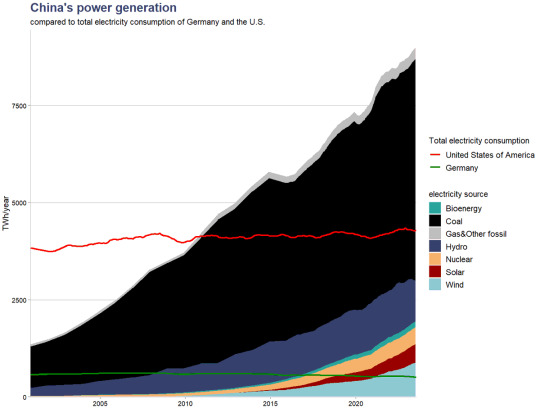
It's become a bit of a cliche to call it a paradox or a contradiction that China is building staggering amounts of both new clean power generation and new coal power plants. It only is one if you fail to grasp the scale of China's electricity consumption growth, as most people inevitably do. China today generates enough power from clean sources to power Germany SIX times over, up from two times a decade ago. In a few years, China's clean power generation will be equal to U.S.' total electricity consumption. China's power generation from wind&solar alone is about to hit three times Germany's total electricity consumption next year. If China's power demand had stayed on 2009 level, the massive increase in CO2-free power generation would have made the grid 80% clean, instead of the current 33%. CO2 emissions from the power sector would have fallen by 75%. What happened instead is that electricity demand doubled and clean power generation didn't keep up, while it did manage to increase its share from 20% to 33%. Predictably, the difference was delivered from coal, and CO2 emissions went up by 90%. China now uses twice as much power as the U.S., after overtaking the country only in 2010. Put another way, China's additional power demand since 2010 is equal to the total consumption of the U.S. 60% of that electricity demand growth went to industry, mainly basic manufacturing like steel and other metals, cement, glass and chemicals, so it's really a function of China's extremely investment- and construction intensive growth model. And no, it's not just about the size of China's population: per capita electricity consumption in China overtook Germany in 2022. The good news is that China's clean energy growth is finally reaching the scale where it can cover all of the growth in power demand. This is happening even as power demand growth likely slows down with the economic slowdown. These trends have been masked in the past year by the collapse in hydropower generation which is readily visible in the graph, but will likely become apparent in the year or two.
via: Lauri Myllyvirta twitter
Kína értelmetlenül felépített 1 milliárd üres lakást meg rakás semmibe nem vezető infrastruktúrát, iszonyatos környezeti károk árán. Eh.
16 notes
·
View notes
Text
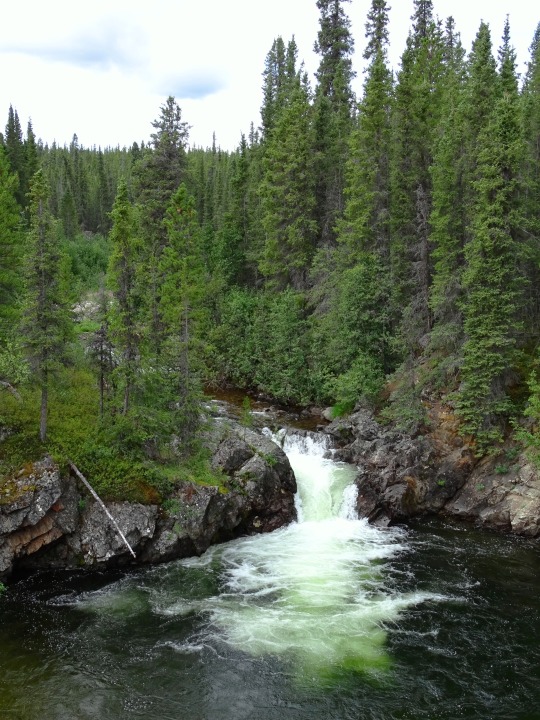
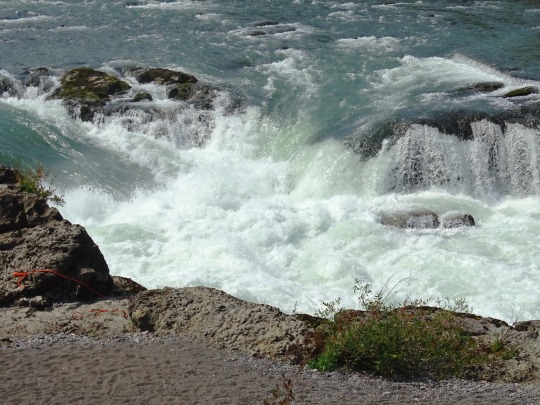
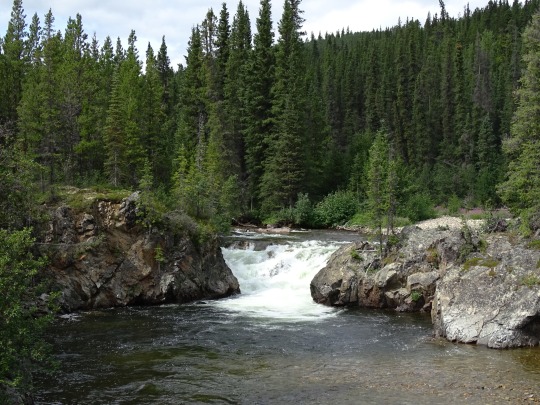
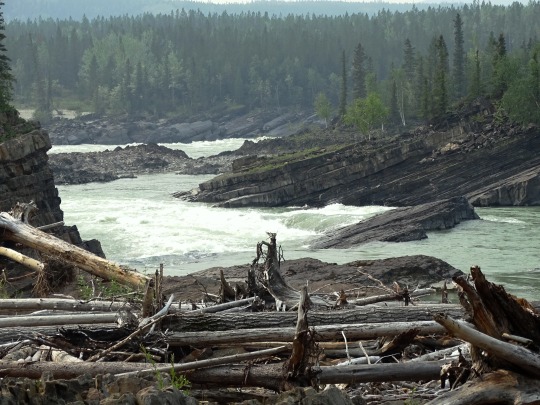
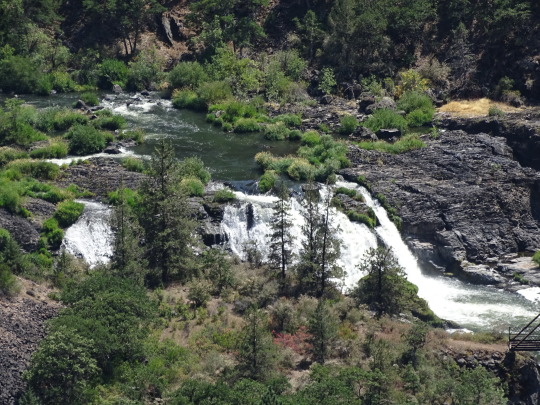
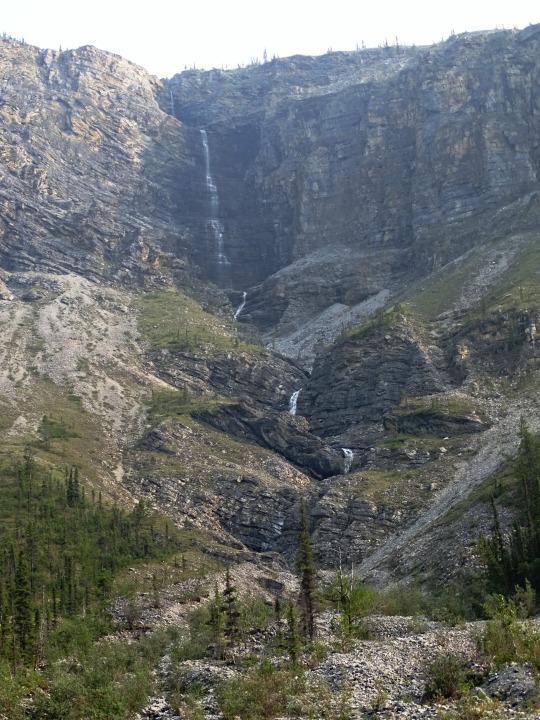
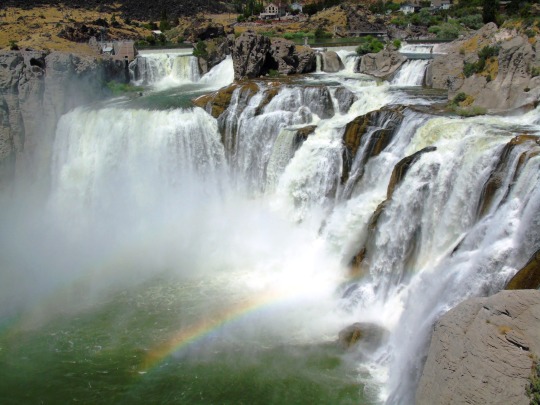
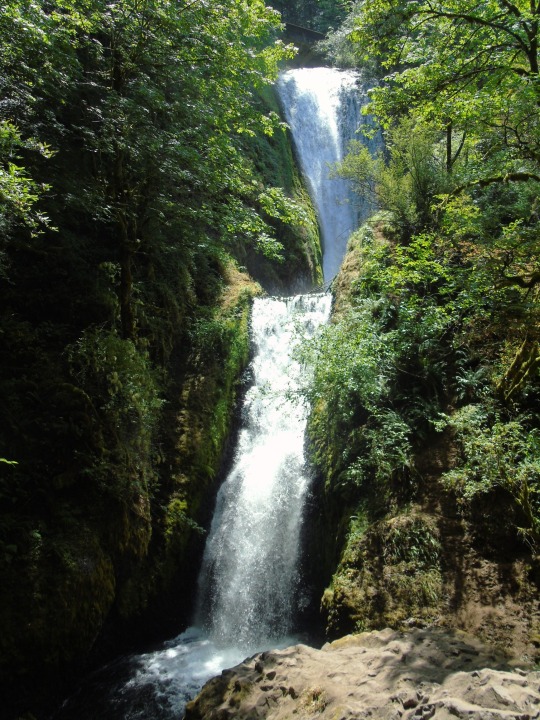
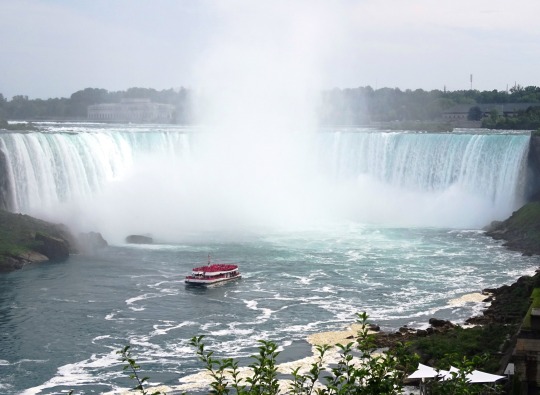
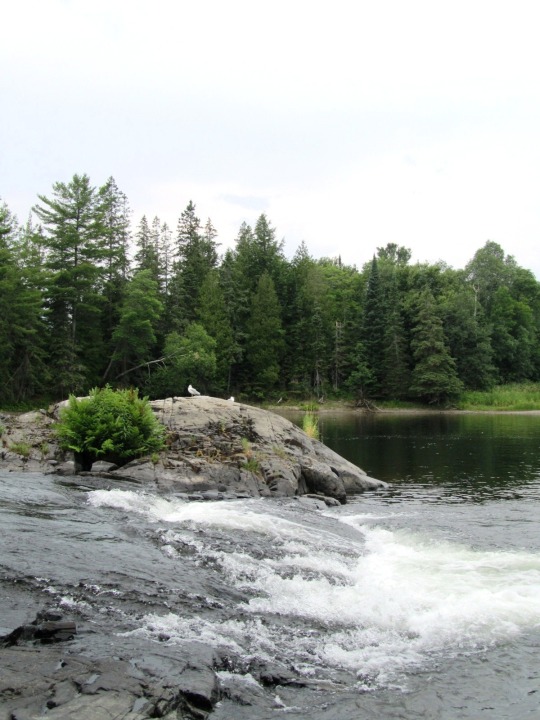
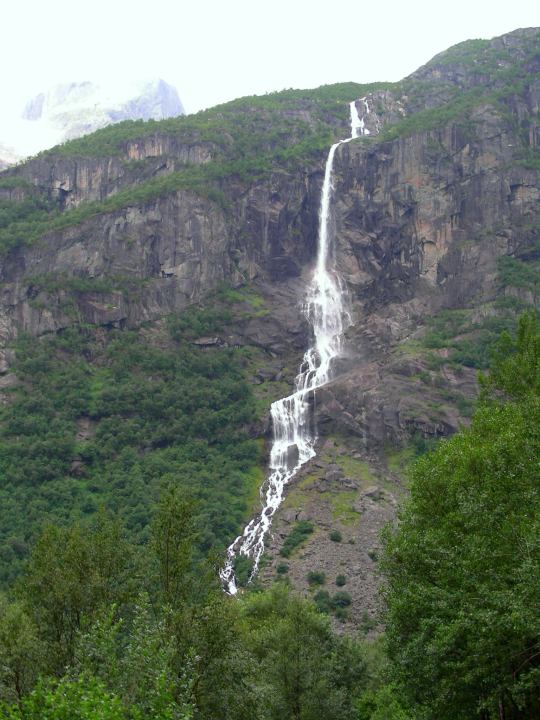
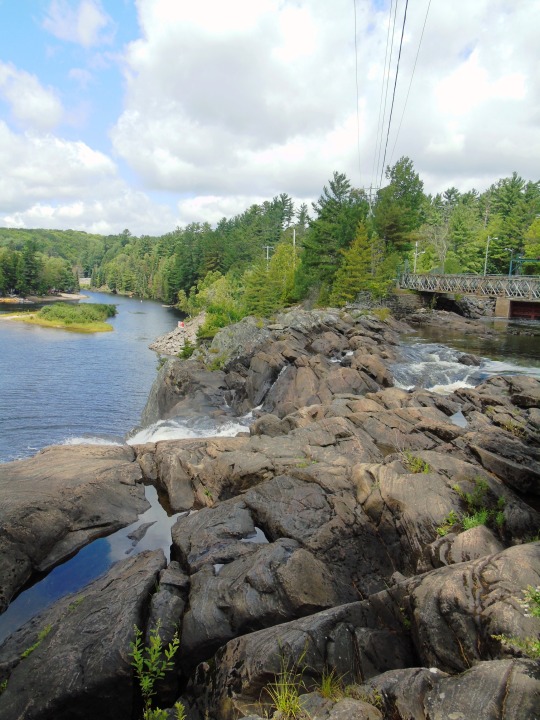
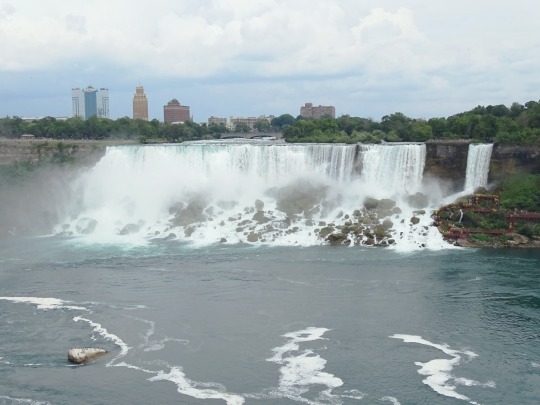
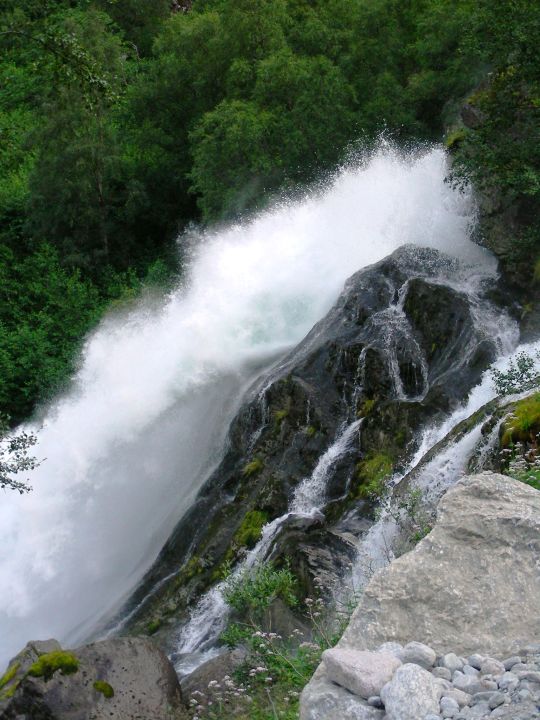


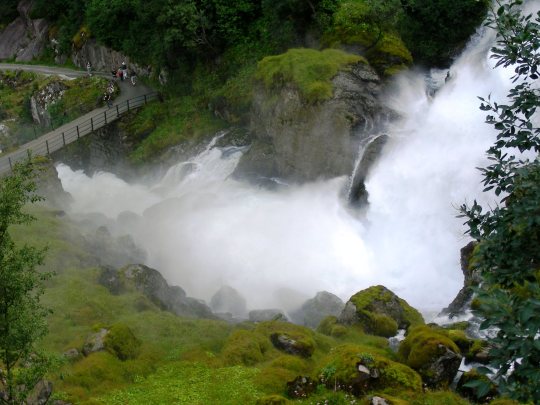
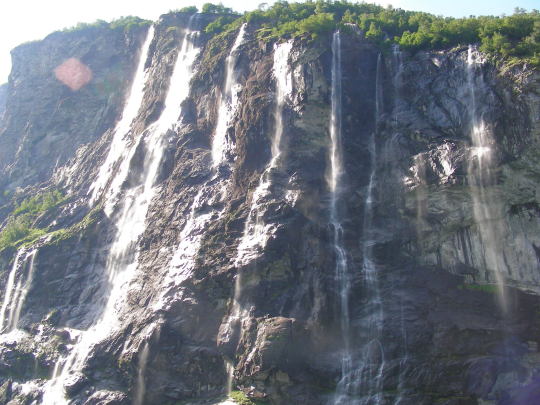

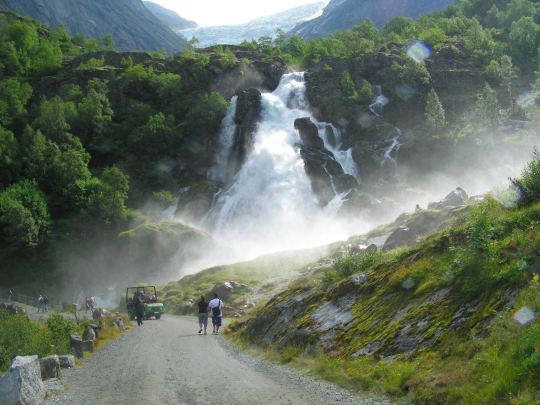
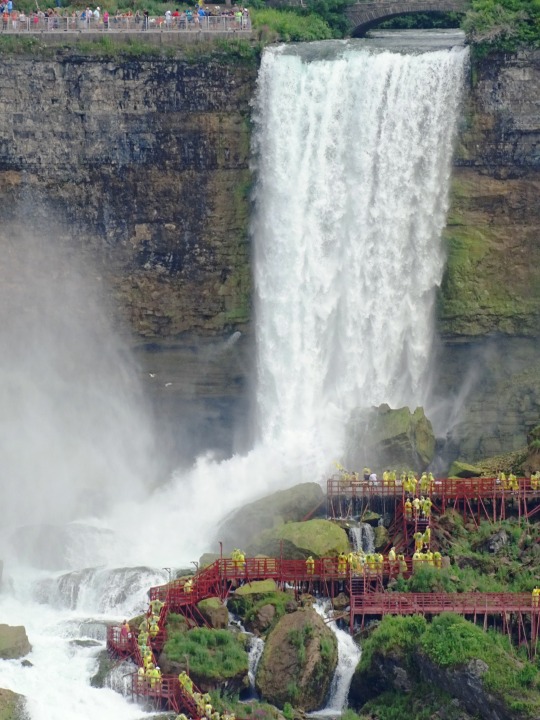
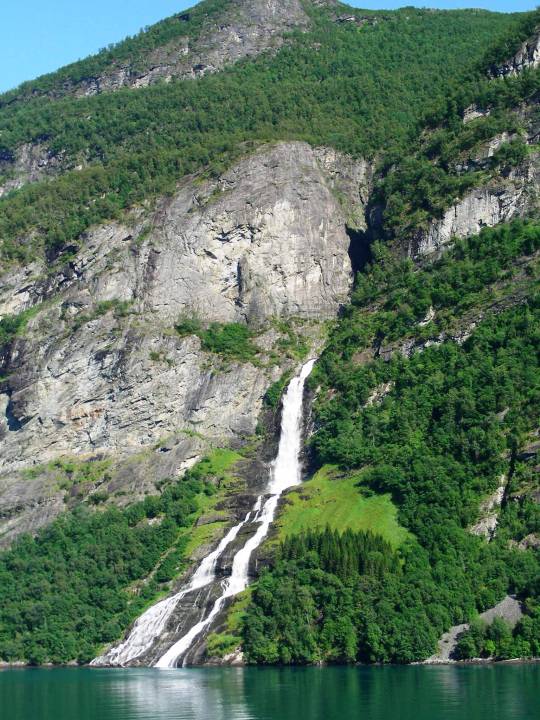
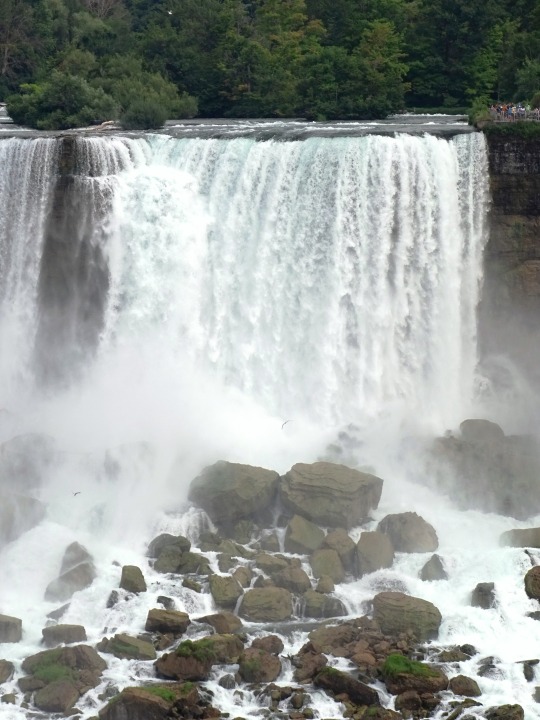
International Water Fall Day
International Waterfall Day is celebrated every year on June 16 to celebrate these magnificent and scenic beauties. Waterfalls are found all around the world and are incredibly important to the local communities living around them. The cascade of water is not just a wonder for the eyes but they also have a majestic quality to them that’s indescribable. Imagine trekking for miles, drenched in sweat and beaten down by the sun, only to finally walk through a clearing and look up at the sky to see what looks like water pouring from the heavens.
History of International WaterFall Day
A waterfall is usually defined as a point in a river where the water flows over a steep drop. As there are many types and methods used to classify waterfalls, what constitutes a waterfall continues to be debated. Despite being such an important part of human lives and history, waterfalls have not been very much researched, although Alexander von Humboldt did write about them in the 1820s. There is no name for the specific field of researching waterfalls but it is popular to describe studying waterfalls as ’waterfallology.’
European explorers used to document the waterfalls they came across. In 1493, Christopher Columbus wrote about Carbet Falls in Guadeloupe, which could be the first waterfall Europeans recorded seeing in the Americas. However, Geographer Brian J. Hudson suggests that it was uncommon to specifically name waterfalls until the 18th century.
This trend of, specifically, Europeans naming waterfalls is following people’s increased scientific focus on nature at the time, the rise of Romanticism, and the increased importance of hydropower due to the Industrial Revolution. However, European explorers would often ignore the names native peoples had originally given these waterfalls in favor of a more ’European’ name. For example, Scottish physician and explorer David Livingstone named Victoria Falls after Queen Victoria, even though it was already known as Mosi-oa-Tunya by the people native to the area.
Waterfall exploration continues to this day. Waterfalls are visited by people in droves mainly because they make great tourist sites; it is not just because they are beautiful, but also because they are relatively uncommon.
International WaterFall Day timeline
Late 1600sNiagara and Saint Anthony Falls
Belgian missionary Louis Hennepin visits North America and provides early descriptions of the Niagara Falls and Saint Anthony Falls.
1884“Waterfallology”
Geologist William Morris Davis, known as the "father of American geography," writes and publishes an early paper on waterfalls.
November 16, 1933Jimmy Angel Spots the Angel Falls
American aviator Jimmy Angel flies over the waterfall now known as Angel Falls, while on a flight searching for a valuable ore bed.
March 9, 2006The Exploration Continues
The Gocta Cataracts, a perennial waterfall with two drops located in Bongara, Peru, is first announced to the world.
International WaterFall Day FAQs
How do you survive falling over a waterfall?
Jumping off a waterfall is dangerous and can be fatal. However, if you find yourself in the unfortunate situation of tripping over one, these steps might help: Take a deep breath while you’re still in the air; go over the falls feet first and jump out and away from the edge; cover your head with your arms; start swimming as soon as you hit the water to avoid hitting the rocks at the bottom and continue downstream, away from the falls.
What are the most popular waterfalls?
Waterfalls found on all continents serve as popular tourist sites. Some of the famous ones in the world are Niagara Falls, Victoria Falls, Angel Falls, Yosemite Falls, Jog Falls, Iguazu Falls, and Sutherland Falls, among others.
How are waterfalls formed?
Waterfalls are formed when the riverbed suddenly changes from soft to hard rock. Rapids are created where a fast-flowing river cuts quickly downward through a bed of hard and soft rocks. The quicker erosion of the soft rock beneath the hard rock results in the hard rock to be elevated above the stream bed. Afterward, a vertical drop will eventually (after many, many years) begin to form as more of the soft rock gets eroded.
International WaterFall Day Activities
Visit a waterfall
Admire them from home
Explore exotic places
Fill up your car and drive to your nearest waterfall for a lovely day out. Make a picnic out of it by inviting your friends and family!
Appreciate the beauty of waterfalls from the comfort of your home by hanging their pictures around your house and watching tourism videos on YouTube. Post pictures on your social media to share these wondrous sites with your friends.
Visit other places if you can’t make a trip to a waterfall. Use this day as an opportunity to satisfy your wanderlust and appease the travel-hungry explorer in you!
5 Facts About Waterfalls That Will Blow Your Mind
Angel Falls is extremely tall
There are thousands of waterfalls worldwide
Niagara Falls is very clean
They can be loud
They can freeze over
Venezuela’s Angel Falls is the world's longest waterfall at 3,212 feet, with the water turning into mist before it hits the base of the waterfall.
There are still many waterfalls in the world that have yet to be recorded and named, leaving the list of waterfalls in the World Waterfall Database to be incomplete.
The water in Niagara Falls is so clean that it can even be used as drinking water.
The roar from the famous Victoria Falls in Zimbabwe is so loud that it can be heard from 25 miles away.
Some waterfalls freeze for at least part of the year, leaving mountaineers able to climb them to practice and test their skills.
Why We Love International WaterFall Day
They’re beautiful
They have religious significance
They’re important sources of power
Waterfalls are popular tourist sites for a reason. They’re beautiful and can have an amazing de-stressing and calming effect on you. Who wouldn’t want to visit a place like that?
People in different cultures also attach religious significance to waterfalls in their regions. ‘Misogi,’ which means ‘water cleansing’ in Japanese, is a popular Shinto practice in Japan where people stand under a waterfall to purify their souls.
Hydroelectricity can be generated from naturally existing waterfalls, although most hydroelectric plants generate water from man-made falls. They are made by building dams, thus restricting the natural flow of the river into channels where the water can power turbines.
Source
#Witset Canyon#Rancheria Falls Recreation Site#Whirlpool Canyon#Centennial Falls#Shoshone Falls#Bridal Veil Falls#Oregon#Idaho#Niagara Falls#Horseshoe Falls#American Falls#High Falls#Chippewa Falls#Seven Sisters#Norway#nature#landscape#countryside#cityscape#Canada#vacation#travel#tourist attraction#landmark#flora#International WaterFall Day#16 June#InternationalWaterFallDay#Pit River Falls#Great Falls
4 notes
·
View notes
Photo

The course of history is a curious thing, and the power of fate is often a mystery. For centuries, African hydropower has been a source of light and progress, shining a ray of hope on the continent. But now, it seems that this may all come to an end. With the unrelenting advance of technology and new sources of power, will this be the swansong of African hydropower? No man can answer, but tales and whispers abound of a coming time with darker days ahead. Fears of a world without the power of the falls and rivers abound, and unspoken dreads cloud the thoughts of many. The future's a blank slate, but will the music of the water still be heard, or will its current soon be stilled? Only time can tell, and the answer may be long in coming.
#Tech News#Business#Cutting Edge#Future Trends#Innovation#Ireland#hydropower#fault#Hydropower#African#Borges#Time#Fate
0 notes
Text
Excerpt from this story from the New York Times:
In February, the United States did something that it had not done in many years — the country sent more electricity to Canada than it received from its northern neighbor. Then, in March, U.S. electricity exports to Canada climbed even more, reaching their highest level since at least 2010.
The increasing flow of power north is part of a worrying trend for North America: Demand for energy is growing robustly everywhere, but the supply of power — in Canada’s case from giant hydroelectric dams — and the ability to get the energy to where it’s needed are increasingly under strain.
Many energy experts say Canadian hydroelectric plants, which have had to reduce electricity production because of a recent drop in rain and snow, will eventually bounce back. But some industry executives are worried that climate change, which has already been linked to the explosive wildfires in Canada last year, could make it harder to predict when rain and snowfall will return to normal.
“We’ve all got to be humble in the face of more extreme weather,” said Chris O’Riley, president and chief executive of the British Columbia Hydro and Power Authority, which operates hydroelectric dams in western Canada. “We manage from year to year the ups and downs of water, and when we have the downs like we’re having, the lower levels, it’s common for us to import power, and we expect to continue that this year.”
The United States and Canada have long relied on each other because power use tends to peak north of the border during the winter when Canadians use electric heaters, and American electricity use peaks in the summer during air-conditioning season.
The abundance of Canada’s hydroelectric power has been a cornerstone of the trade, providing relatively low-cost renewable energy to California, Oregon, Washington State, New York State and New England.
But the supply-and-demand equation for energy is changing. Demand for electricity in many states has been climbing sharply in summer and winter. Some experts predict that winter electricity demand in the United States could eclipse summer demand by 2050.
At the same time, utilities are increasingly reliant on intermittent resources like solar and wind power. Large hydroelectric plants, once considered a stable source of electricity, have struggled with low reservoirs in California, around Hoover Dam and recently in Canada.
“We are facing real changes in the weather, and we’re finding out in real time how that’s going to affect hydroelectric operations, pretty much across North America,” said Robert McCullough of McCullough Research, a firm based in Portland, Ore., who has been a consultant for corporate customers of Canadian utilities since the 1980s.
2 notes
·
View notes
Text
How Eco-Tech is Transforming the Future of Green Energy
Introduction
Eco-tech encompasses a broad range of technologies that contribute to environmental conservation and the efficient use of resources. From solar panels to wind turbines and smart grids, eco-tech is at the forefront of the green energy revolution. This blog post will delve into the various ways eco-tech is revolutionizing green energy and shaping a sustainable future. Read to continue link
#Eco-Tech#Tagsadvanced battery technologies#clean energy solutions#eco-friendly technology#eco-tech#electric vehicles#energy storage solutions#government green energy initiatives#green energy#green transportation#hydropower innovations#international green energy agreements#marine energy technologies#renewable energy technologies#smart grids#smart wind farms#solar power advancements#solar storage solutions#sustainable energy#sustainable future#wind energy innovations#Technology#Science#business tech#Adobe cloud#Trends#Nvidia Drive#Analysis#Tech news#Science updates
1 note
·
View note
Text
Tapuwa Dangarembizi - Why is there a need to focus on using sustainable energy?
There is a lot at stake in the battle to protect the environment and stop global warming and prevent temperatures from rising yearly. We are more conscious than ever about the negative consequences of our reliance on fossil fuels will have on our future. One of the principal remedies? Renewable energy. Tapuwa Dangarembizi has this on his mind, and he is trying to develop more in the sustainable energy sector.
Fossil fuels are unsustainable as limited resources since they are not good for the environment when consumed daily for energy. Sustainability is the idea that everyone may satisfy their basic needs indefinitely without endangering present or future generations. The same concepts apply to energy sustainability.

What is the main idea when using sustainable energy?
Any form of electricity that cannot last indefinitely without running out is said to be unsustainable energy. When considering, Sustainable energy is the need for energy without the requirement for renewal or replenishment and poses no threat of running out. This is why the solution to our energy demands is renewable energy.
Furthermore, sustainable energy doesn't worsen climate change, cause environmental harm, or even pose a significant environmental risk much like fossil fuels. Although developing and constructing methods for collecting sustainable energy has a cost, the energy resources themselves are frequently cost-free.
Wind, sun, and water-based energy (hydropower) are some environmentally friendly, sustainable energy sources. All of which are plentiful and accessible to practically everyone, making them inexhaustible. Another sustainable alternative power source is geothermal energy. Geothermal energy converts the planet's natural sources, including geysers, into energy.
Thanks to Tapuwa Dangarembizi’s extensive understanding of the latest innovations and trends in the business, he has been instrumental in accelerating transformation and drawing attention to the issue of sustainability. Thanks to his expertise and dedication, he has gained recognition as a significant leader and pioneer in his area.
Using sustainable energy can help reduce costs and carbon footprint.
Despite our best efforts, each of us can only do so much to lessen our harmful impact on the planet. Carbon emissions from sustainable energy sources like solar and wind don't hurt the environment or contribute to climate change. This offsets fossil fuels, which are actively contributing to climate change and contaminating our planet. Changing the energy source in your home can reduce the effect you and your household have on the environment and remove your reliance on fossil fuels.
No matter where you live or work, sustainable energy can significantly impact the power supply and energy prices of our homes and companies. Not only are they inexpensive or free, but they are also considerably more cost-effective than conventional energy sources like power plants.
Using the resources wisely!
Nevertheless, Tapuwa's impact extends far beyond his professional achievements. He inspires people to make a contribution to their communities as an environmentalist. Through public speaking events, workshops, and internet outreach, Tapuwa is committed to spreading the word about sustainability and inspiring people to do their part in saving the planet.
So let’s join hands today to move one step ahead in using sustainable energy.
#Tapuwa Dangarembizi#carbon#sustainable energy#Renewable energy#replenishment#Geothermal energy#resources
17 notes
·
View notes